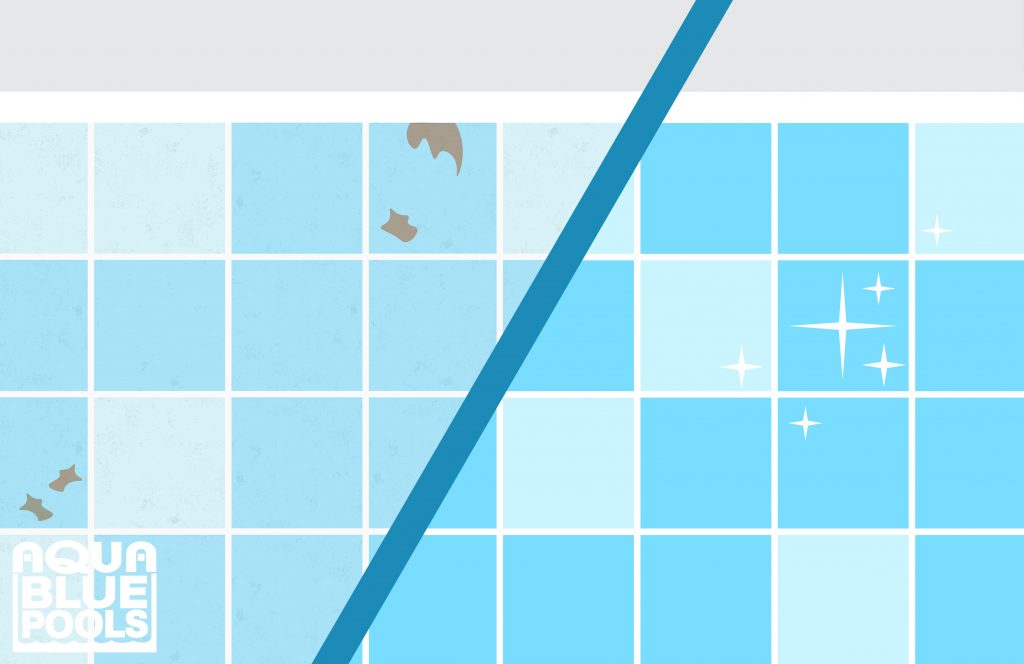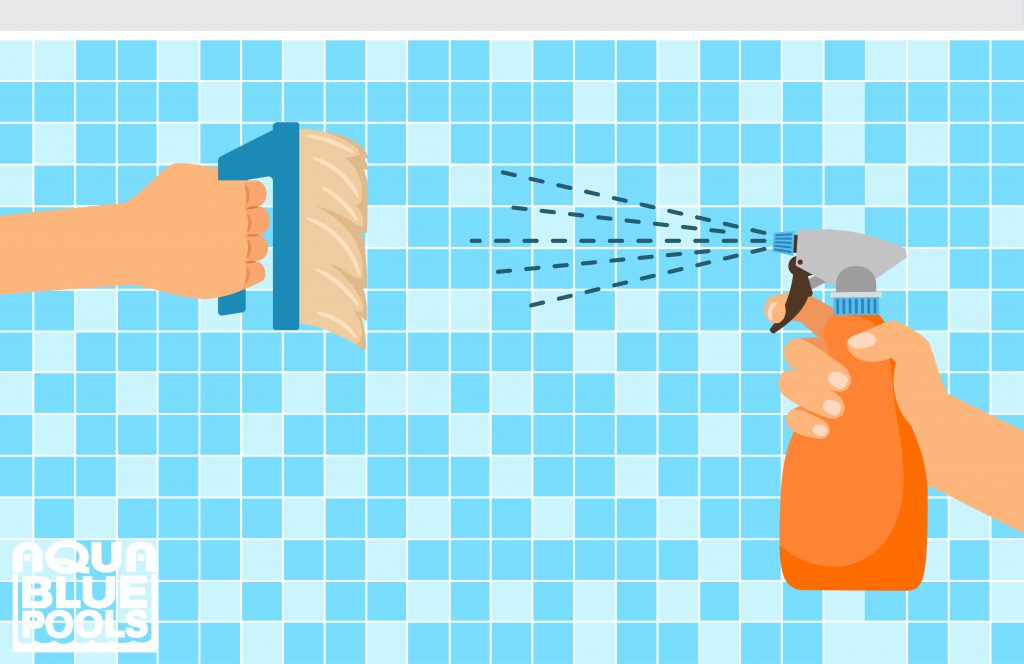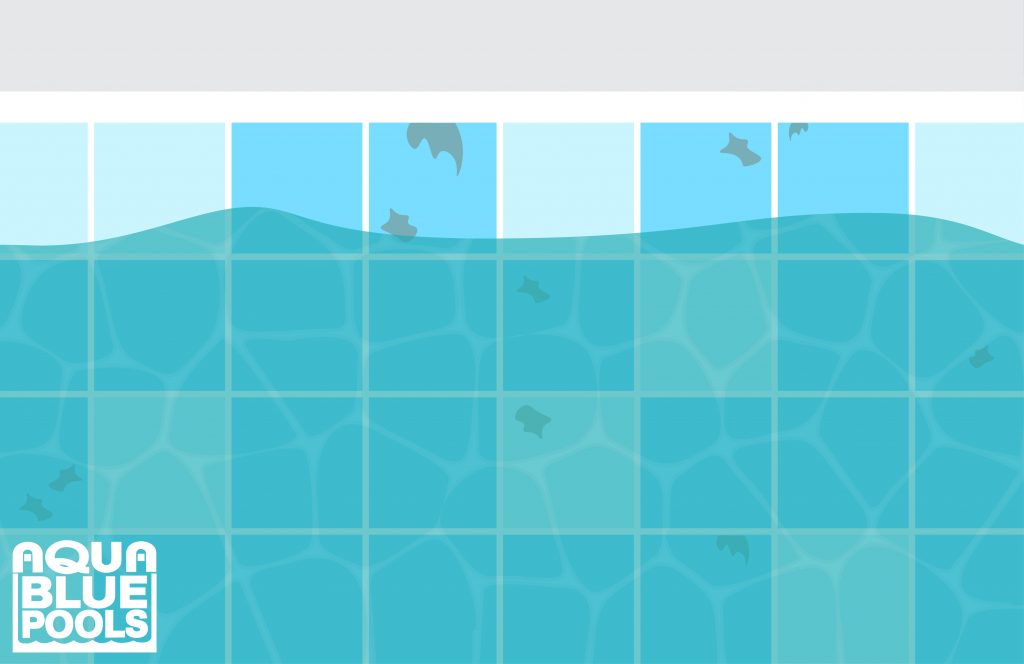Your pool tiles are key to making your pool water appear clean and fresh. So when calcium deposits start building up between the tiles, it can quickly make your pool look less appealing.
Regular pool maintenance is the best way to eliminate calcium deposits and keep your pool attractive all year round.
In this article, we take a look at some of the most effective methods for cleaning your pool tiles.
If you are looking for your dream pool in South Carolina SC, you are in the right place! Make your dream a reality with our master craftsmen! See our Luxury Pools for inspiration!
Book an appointment with our team, or call us on [ld_default] for a quote.

What are calcium deposits and why do they make pool tiles look dirty?
A buildup of calcium can be caused by hard water, chemicals and evaporation. You’re most likely to find calcium deposits building if your pool has a high pH level and is heated.
Calcium buildup comes in two forms: calcium carbonate and calcium silicate. Calcium carbonate leaves a fine film over your pool tiles and builds up in layers. Calcium silicate can be identified by a sharp and crystallized buildup which requires more intensive cleaning to remove.
Calcium buildup can cause a number of issues, namely:
- It can irritate the eyes and skin of anyone swimming in the pool
- It makes the pool look visually less appealing
- It can clog your pool filters, preventing the removal of dirt, bugs and leaves
- It can damage your pool’s filter system, making it slow and inefficient
- It can damage the floor of your pool
- It can flake off the tiles of your pool
Equipment needed for cleaning pool tiles
The equipment you need to clean your pool tiles will depend on the cleaning method employed. In any case, you’ll need a brush, but you should only use a suitable brush for your pool type.
- If you have a plaster pool, use a pumice stone or a hard-bristled brush
- If your have a fiberglass pool, use a textured, soft sponge
For light buildup, all you’ll need is a solution of vinegar and water in a spray bottle and a suitable brush.
For heavier buildup, you may need the following:
- Heavy calcium releaser
- Putty knife
- Scrubbing brush
- Sealer

How to clean tiles around the pool
Waterline tiles are the tiles that meet the water line. These can be cleaned easily using a suitable brush and a solution of vinegar and water. Work quickly in circular motions for best results.
How to clean tiles under the water
Stubborn or significant buildup on lower tiles will require more rigorous cleaning than simply scrubbing with vinegar. The following method is effective at tackling significant and stubborn buildup.
1. Reduce the level of water in your pool so that you can access the tiles with calcium buildup
2. Use a putty knife to remove the thick calcium crust
3. Apply a heavy calcium releaser to the tile and allow it to soak for a few minutes
4. Scrub the tile with a suitable scrubbing brush to remove the next layer of calcium. Continue this step until every layer has been removed
5. Let the tile dry completely
6. Apply a sealer to protect against future calcium buildup

Cleaning tiles without draining the pool
A tougher task is to clean pool tiles without draining the pool. In this case you’ll want to treat the water with a calcium hardness-dissolving remover. You can use either sodium bisulfate removers or muriatic acid. The latter is generally preferred, because it doesn’t add sulfates to the water.
Another effective method to clean pool tiles is soda blasting. Soda blasting requires high-pressure equipment and should only be attempted by professionals. If you’re struggling to remove calcium buildup in your pool, consider contacting a reputable pool maintenance professional.
Aqua Blue Pools are South Carolina’s leading professional pool builders, offering installation, maintenance and repairs for pools across SC. We can efficiently and effectively remove calcium buildup in any type of pool to ensure it is safe to enjoy all year round.
Contact our team today to find out how we can help you.


